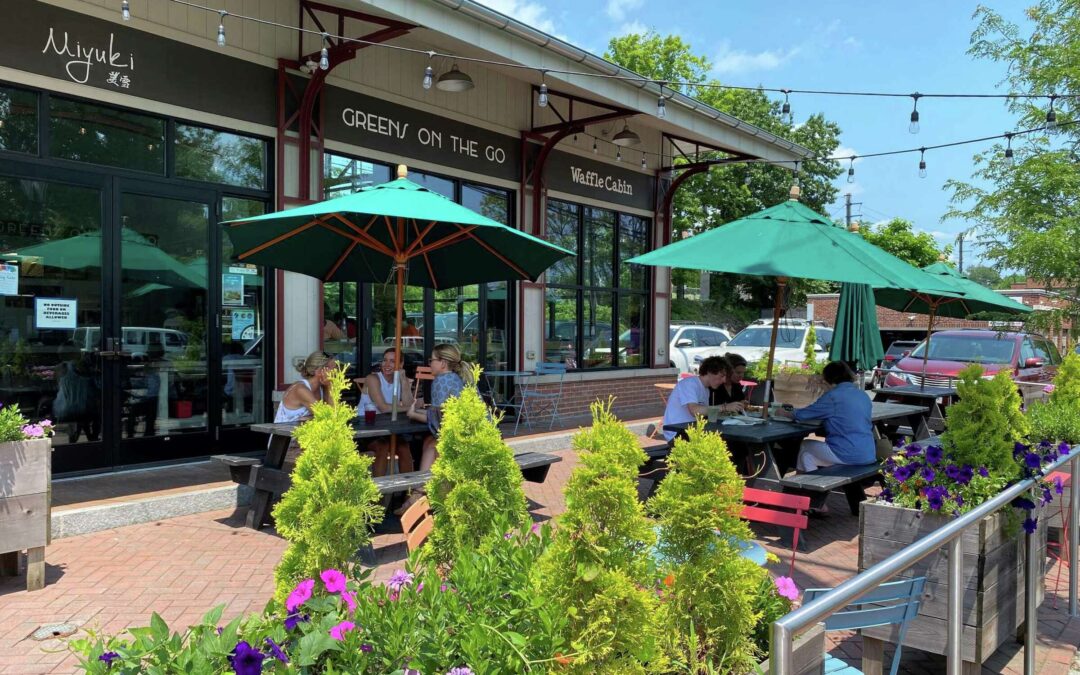The Importance of Food Waste Diversion
A couple months ago, I set out to figure out how Planet New Canaan could help local restaurants divert their food waste. This seemed a logical next steps after the positive advancements New Canaan has made by setting up food scrap recycling at the Transfer Station. Now is the time to evaluate food waste diversion in the town’s commercial establishments, i.e. restaurants.
Food Waste Facts
I was particularly eager to take on this challenge after taking a deep dive into the facts about food waste:
- If food waste were a country, it would be the third-largest greenhouse gas emitter behind China and the U.S. (Food and Agriculture Organization of the UN)
- Why? Even though one-eighth of Americans struggle to put food on the table,[1] 40 percent of food in the U.S. is never eaten. Most of this food ends up in waste-to-energy plants[2] or in landfills where food rots and emits methane, a greenhouse gas that is 25 times more powerful than CO2 (EPA)
- In fact, food waste made up the largest percentage of waste in landfills (24%) and combustion facilities (22%) than any other type of material in the U.S. (2018 EPA).
- The U.S. restaurant sector generates an estimated 11.4 million tons of food waste annually – costing a cumulative $25 billion. Only 2% of restaurants donate leftover food (REFED).
Working with New Canaan Restaurants
To start, we outlined a general plan for a food waste diversion pilot program, which would fully fund and run the logistics of implementing a food waste diversion system for interested restaurants. Then, I reached out to the New Canaan Chamber of Commerce to see if they could put me in touch with the right people. Five restaurant owners responded positively to the initial outreach, spanning a full range of New Canaan restaurants.
I arranged times to meet with the restaurant owners from each establishment to discuss the initiative and gather information. Many of the restaurant owners whom I spoke to were very interested in participating in a PNC-led pilot program for diverting food waste. I outlined my ideas for the program including offerings such as education and training for employees, and marketing services for restaurants. These owners were excited about and shared their passionate interest in mitigating their restaurant’s impact on the environment. Encouraging, right?
Some Barriers To Consider
These conversations and kitchen tours however revealed several barriers that challenge our restaurant food waste diversion initiative:
- The sheer amount of waste… I’m talking about three 65-gallon bins of trash. Everyday. The logistics of ensuring the large amount of food waste generated by restaurants is properly diverted and transported is critical.
- The current Economics of Recycling…Waste hauler fee structures make recycling more expensive for waste producers. This poses the inevitable questions for these strained restaurants who run tight financial models: what is the long-term financial sustainability of diverting food waste? Furthermore, working with waste haulers can sometimes be opaque, time-consuming, and confusing.
- Limited space inside and outside of restaurant premises for placement of food waste bins creates worries among restaurant managers and employees.
- Finding effective ways to change the deeply rooted habits of restaurant employees will be another challenge as they’ll need to change their processes to ensure food waste is diverted at each stage of preparation.
Hope for the Future
Despite the challenges, there are evident trends that favor waste diversion possibilities in the future.
- Customer interest and pressure – Studies show that there is increasing interest among consumers for sustainability as an operational objective with specific references to restaurants and grocery stores ( Food Business News ).
- Potential for savings – Some restaurants have been able to reduce their waste hauling bill as a result of reducing the frequency of pick-ups and weight of their trash (Link).
- Federal priorities – The USDA and EPA set a goal to reduce food waste by half by 2030, creating a national priority for food waste diversion (EPA)
- CT Regulations – In 2011, CT was the first state to require institutions generating large amounts of food waste to recycle this waste. An updated version of this law — the CT Commercial Organics Recycling (2022) — requires institutions that generate 26 tons[3] of food waste a week to divert their food waste, if they’re within 20 miles of a composting facility.
- Other States Leading the Way Fellow-New England states of Massachusetts, Rhode Island, and Vermont, along with California, have passed food waste diversion laws.
- Local advancements – Nearby towns including Darien, Norwalk, Stamford, Westport, Greenwich, Wilton, Fairfield, and more – have all started their own local food waste diversion systems. Greenwich launched a Food Matters Challenge for local businesses. Several restaurants in Middletown, CT and Manhattan are also already in the business of composting their food scraps. Our very-own Walter Stewart’s uses Curbside Compost to divert its food waste!
[1] Food insecurity, particularly among seniors, children, veterans, the disabled and other vulnerable populations, is a pressing issue for cities across the country. Nationally, more than 41 million people are considered food insecure. (REFED)
[2] Waste-to-energy plants generate toxic waste and pollution
[3] This threshold, which is equivalent to 1,000 lbs. a week, has been halved from the preceding law which required commercial institutions generating 52 tons of waste would be required to divert their food waste, a sign that the state is looking to encourage smaller and smaller businesses to participate in the future.


This is such an important topic and I am glad to see the progress made so far. Are any of the restaurants able to donate excess edible food to organizations that pick up and distribute it to those in need of food?